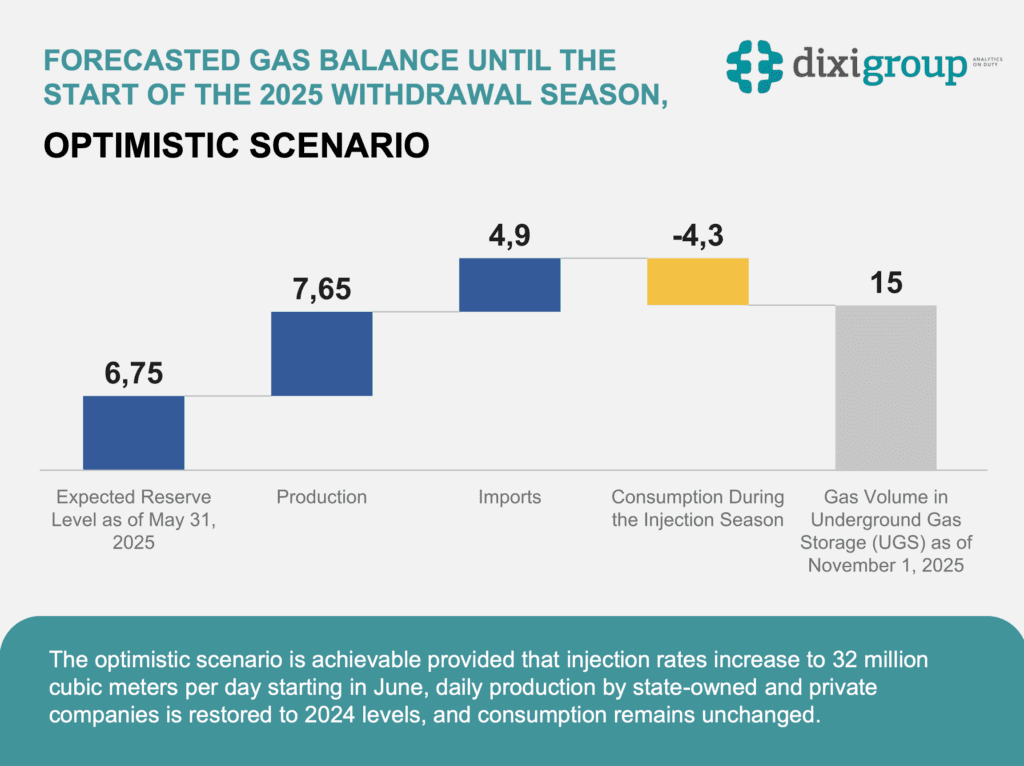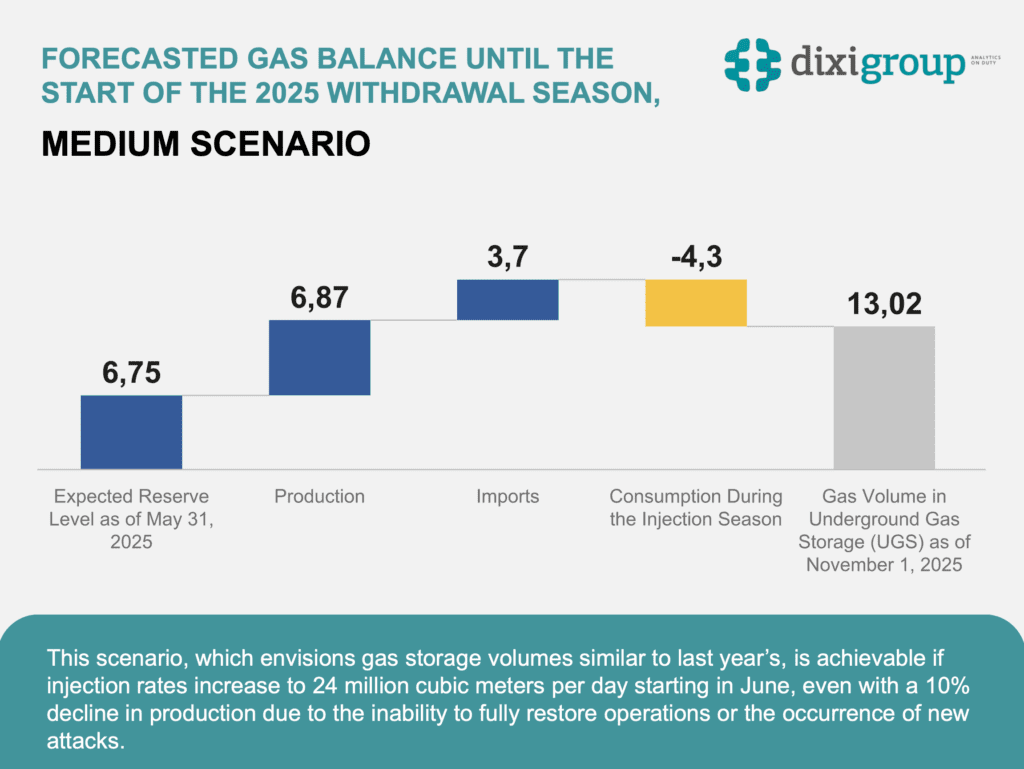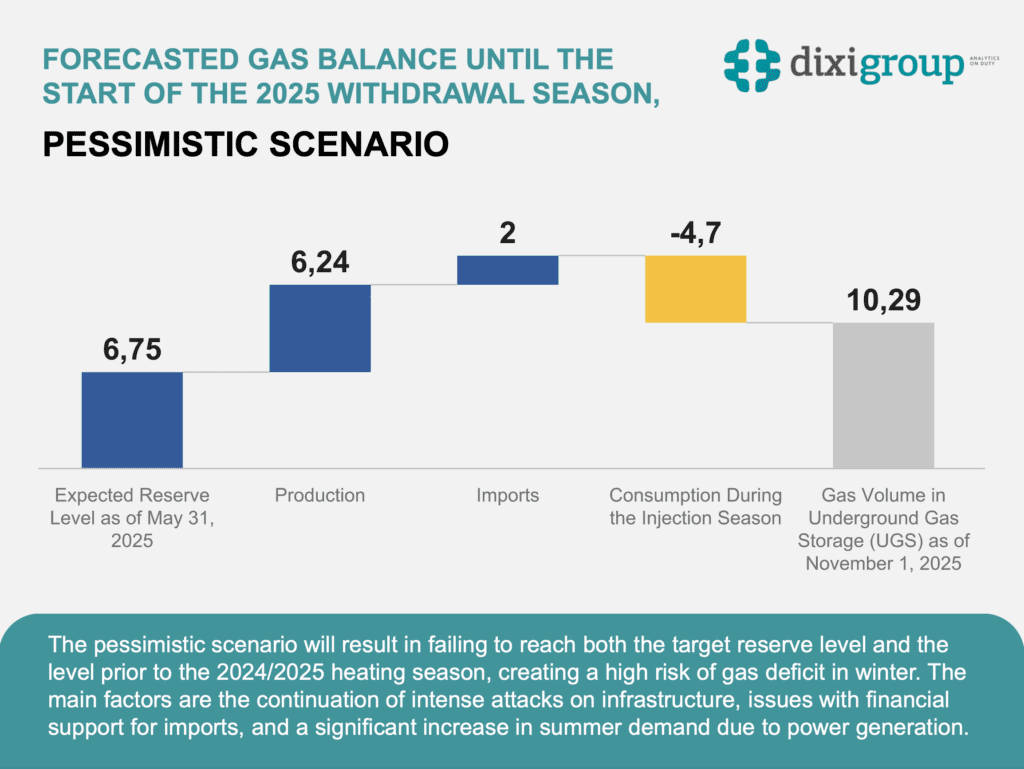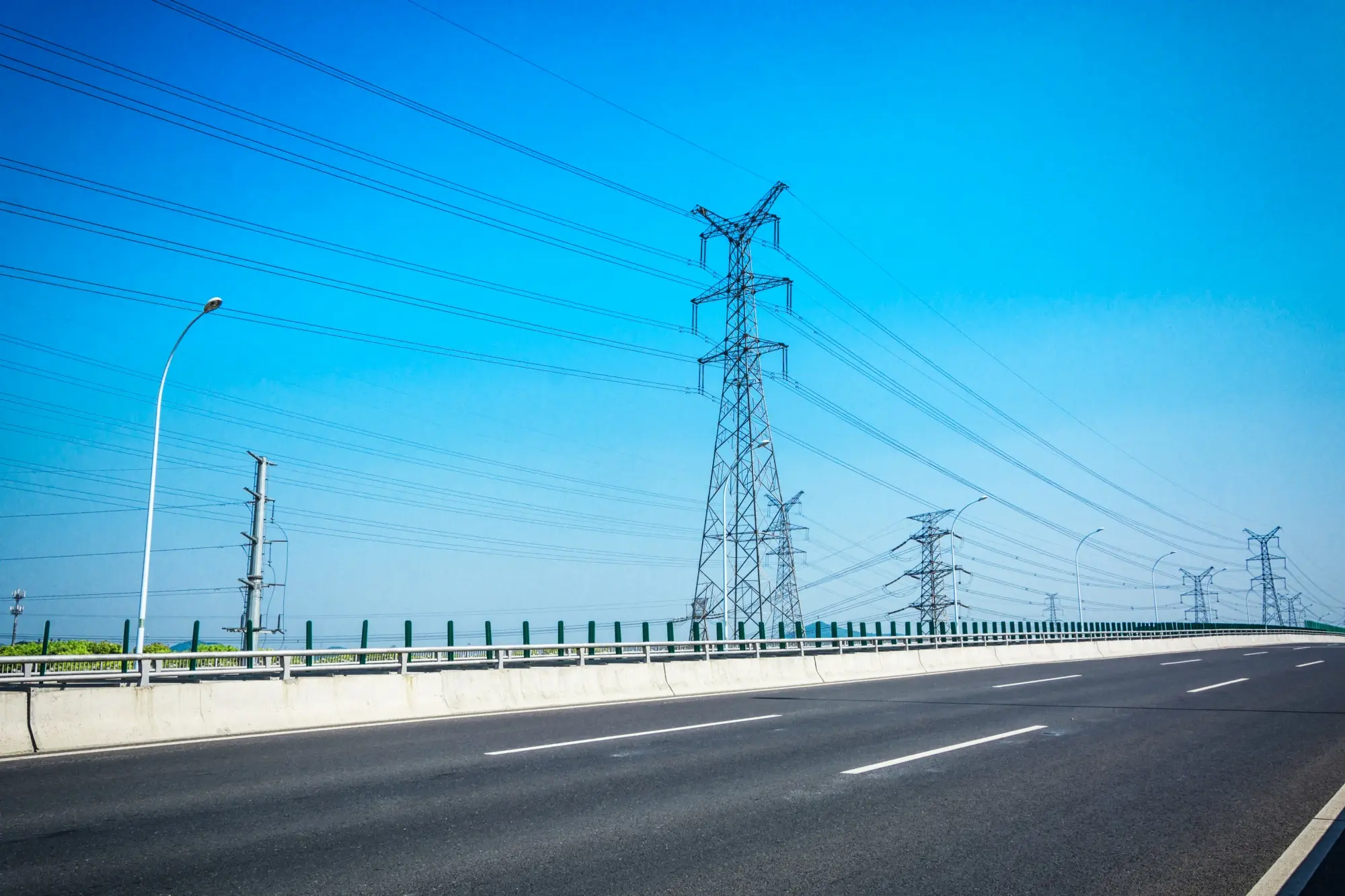Assessment of short-term and seasonal adequacy
Consumption in 2024 nearly mirrors the figures from 2023, particularly in the 2nd and 3rd quarters, indicating a stabilization of demand following a sharp 8.3% drop in 2022 due to the war and population migration. In 2023, the decline was 2.3% compared to 2022, partly due to energy efficiency measures.
However, the 4th quarter of 2024 shows a slight increase in consumption, driven by a rise in gas-fired power generation amid shortages of other energy sources.
Gas imports in 2025 have become critically important for ensuring energy security. Since the beginning of the year, 1.12 billion cubic meters have been imported, which is ten times higher than the same period in 2024. The primary sources were Hungary (60%), Slovakia (23%), and Poland (17%).
FORECASTED GAS BALANCE UNTIL THE START OF THE 2025 WITHDRAWAL SEASON
OPTIMISTIC SCENARIO
The optimistic scenario is achievable provided that injection rates increase to 32 million cubic meters per day starting in June, daily production by state-owned and private companies is restored to 2024 levels, and consumption remains unchanged.

MEDIUM SCENARIO
This scenario, which envisions gas storage volumes similar to last year’s, is achievable if injection rates increase to 24 million cubic meters per day starting in June, even with a 10% decline in production due to the inability to fully restore operations or the occurrence of new attacks.

PESSIMISTIC SCENARIO
The pessimistic scenario will result in failing to reach both the target reserve level and the level prior to the 2024/2025 heating season, creating a high risk of gas deficit in winter. The main factors are the continuation of intense attacks on infrastructure, issues with financial support for imports, and a significant increase in summer demand due to power generation.



SUCCESS FACTORS
▪ Conclusion of long-term contracts and utilization of joint procurement
Short-term contracts are 10-15% more expensive. The AggregateEU mechanism enables joint purchasing with other consumers/traders, reducing costs. 4 billion cubic meters is only 1.5% of EU imports.
▪ Continuous monitoring and control of injection rates
The import volume should be at least 24 million cubic meters per day, adjustable based on domestic production and demand.
▪ Securing financing from international and domestic sources
Conduct negotiations to secure loans and grants for Naftogaz, including under state guarantees. For potential budget support, finalize calculations by August to avoid delays.
▪ Leveraging private sector opportunities (at least for the competitive market segment)
Encourage exchange trading and overall market liberalization. Consider implementing a mechanism for creating a gas insurance reserve.
This material was prepared by DiXi Group NGO with the support of the International Renaissance Foundation within the framework of the project “Best Energy Security for Tomorrow” The material reflects the position of the authors and does not necessarily reflect the position of the International Renaissance Foundation.
